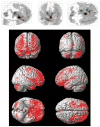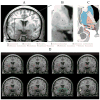Social outcomes in childhood brain disorder: a heuristic integration of social neuroscience and developmental psychology
- PMID: 17469991
- PMCID: PMC2841002
- DOI: 10.1037/0033-2909.133.3.535
Social outcomes in childhood brain disorder: a heuristic integration of social neuroscience and developmental psychology
Abstract
The authors propose a heuristic model of the social outcomes of childhood brain disorder that draws on models and methods from both the emerging field of social cognitive neuroscience and the study of social competence in developmental psychology/psychopathology. The heuristic model characterizes the relationships between social adjustment, peer interactions and relationships, social problem solving and communication, social-affective and cognitive-executive processes, and their neural substrates. The model is illustrated by research on a specific form of childhood brain disorder, traumatic brain injury. The heuristic model may promote research regarding the neural and cognitive-affective substrates of children's social development. It also may engender more precise methods of measuring impairments and disabilities in children with brain disorder and suggest ways to promote their social adaptation.
(c) 2007 APA, all rights reserved
Figures




References
-
- Achenbach TM. Manual for the Child Behavior Checklis/4–18 and 1991 profile. Burlington, VT: University of Vermont, Department of Psychiatry; 1991.
-
- Adolphs R. The neurobiology of social cognition. Current Opinion in Neurobiology. 2001;11:231–239. - PubMed
-
- Adolphs R. Neural systems for recognizing emotion. Current Opinion in Neurobiology. 2002;12:169–177. - PubMed
-
- Adolphs R. Cognitive neuroscience of human social behaviour. Nature Reviews: Neuroscience. 2003;4:165–178. - PubMed
-
- Adolphs R, Baron-Cohen S, Tranel D. Impaired recognition of social emotions following amygdala damage. Journal of Cognitive Neuroscience. 2002;14:1264–1274. - PubMed

